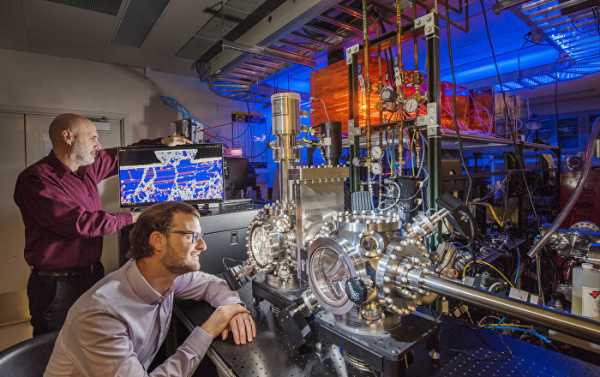
Researchers at the notorious Sandia National Laboratories in New Mexico – a primary supplier of US ancillary nuclear weapon systems – have announced the development of a two-metal alloy that is so hard that only diamond can compare in its ability to resist wear.
Boasting a durability and strength rating an estimated 100-times harder than high-strength steel, the platinum-gold alloy can withstand incredibly high levels of heat and friction, and can last much longer than existing materials in high-stress environments.
As an added boost, the accidentally-discovered super-hard material also eases friction because it makes its own lubricant — in the form of atom-thick layers of super-slick, super-hard, diamond-like carbon.
Considered currently to be the most wear-resistant metal alloy known to science, the material has a multitude of applications, including electronics, manufacturing and space exploration.
In testing the thermal stability of combined metals, researchers at Sandia identified a resulting alloy comparable to the molecular constitution of sapphire and diamond, after extensive wear testing on its microstructural surface.
“We showed there’s a fundamental change you can make to some alloys that will impart this tremendous increase in performance over a broad range of real, practical metals,” stated Nicolas Argibay, a co-author of the Sandia Labs paper announcing the discovery, cited by the journal Advanced Materials.
The new material is reported to have a silver-white finish that combines the look of platinum with the density and heft of gold.
The benefits of the super-hard alloy include a much longer lifetime of use, particularly due to its remarkable ability to produce diamond-like carbon under stress that serves as an industrial-strength lubrication, adding significant benefits in terms of time and cost because the material requires no traditional lubricants.
“These wear-resistant materials could potentially provide reliability benefits for a range of devices,” said Sandia-based engineer Chris Nordquist, adding, “opportunities for integration and improvement would be device-specific, but this material would provide another tool for addressing current reliability limitations of metal microelectronic components,” cited by Electronicsweekly.com.
Electronics technologies currently integrate a thin layer of gold plating in almost every printed circuit and electronic contact. Manufacturers navigating the economic benefits of recycling materials for reuse are deeply interested in any improvements in friction or wear resistance.
Industry observers have pointed out that the potential integration of the super-hard, super-long-lasting alloy would shift part of the manufacturing narrative away from the high cost of reclamation to one of sustainability, extending the lifetime use of our increasingly important electronics devices.
Sourse: sputniknews.com






